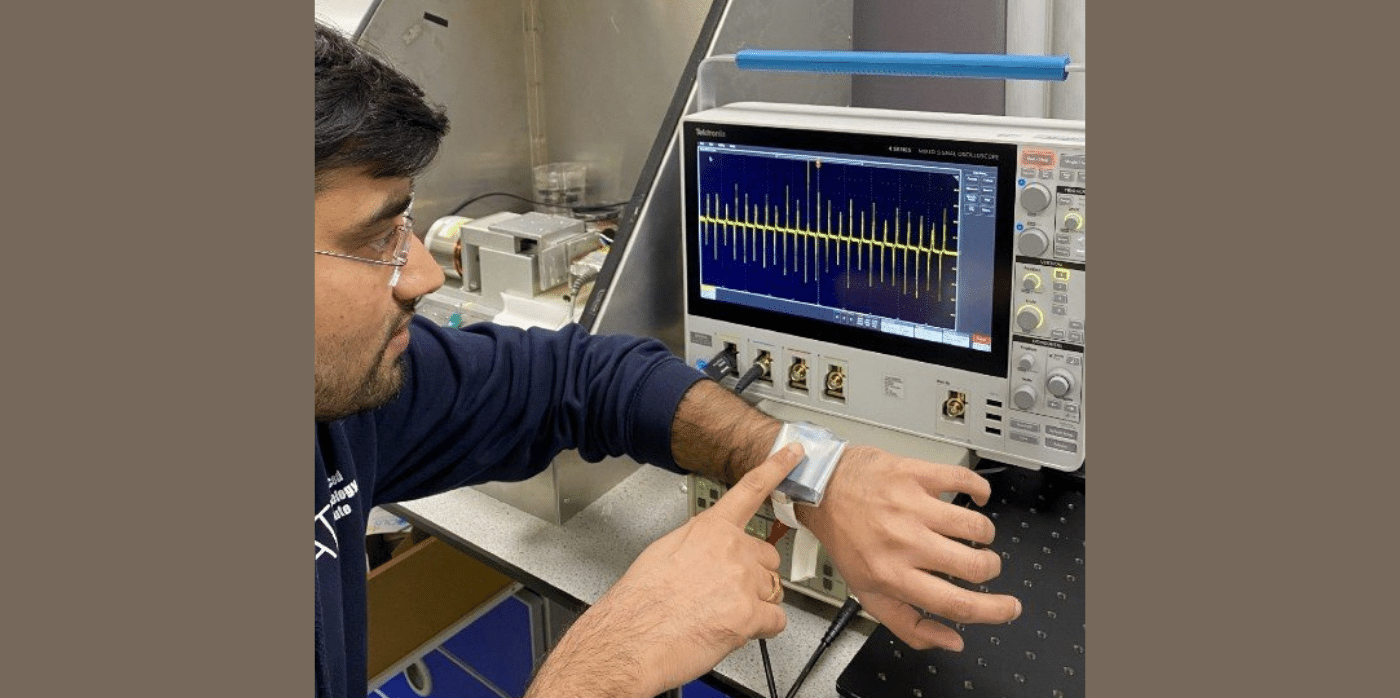Spotted: The global market for smart wearables is forecast to reach $42.3 billion (around €38.9 billion) by 2028. These devices will undoubtedly improve our lives through greater connectivity and convenience. But more electronic devices mean more demand for raw materials such as iron, copper, and gold – something which is increasingly emerging as a problem.
To tackle this, researchers from the University of Surrey, are explored how recycled waste materials can be used to make wearables by developing and testing a prototype wrist device made from discarded paper wipes and plastic cups.
The prototype is powered by energy harvested from the wearer’s movements. The device contains materials—called Triboelectric Nanogenerators (TENGs)—that become electrically charged when they rub against one another, in a process known as electrostatic induction. This charge is used to power the device – which currently transmits morse code. In the future the prototype could be developed into a smart watch.
“It won’t be long until we have to ask ourselves which of the items we own are not connected to the internet,” explains Dr Bhaskar Dudem, project lead and Research Fellow at the University of Surrey’s Advanced Technology Institute (ATI). “However, the current internet-of-things (IoT) revolution highlights the simple fact that our planet doesn’t have the raw resources to continue to make these devices which are in such high demand.”
Wearable innovations recently spotted by Springwise include
a biosensor
that can measure emotional data, a wearable
sensor for tracking stress, and a wearable
that uses the human body to power electrical equipment.
Written By: Matthew Hempstead
13th April 2022
Email: mediarelations@surrey.ac.uk
Website: surrey.ac.uk

